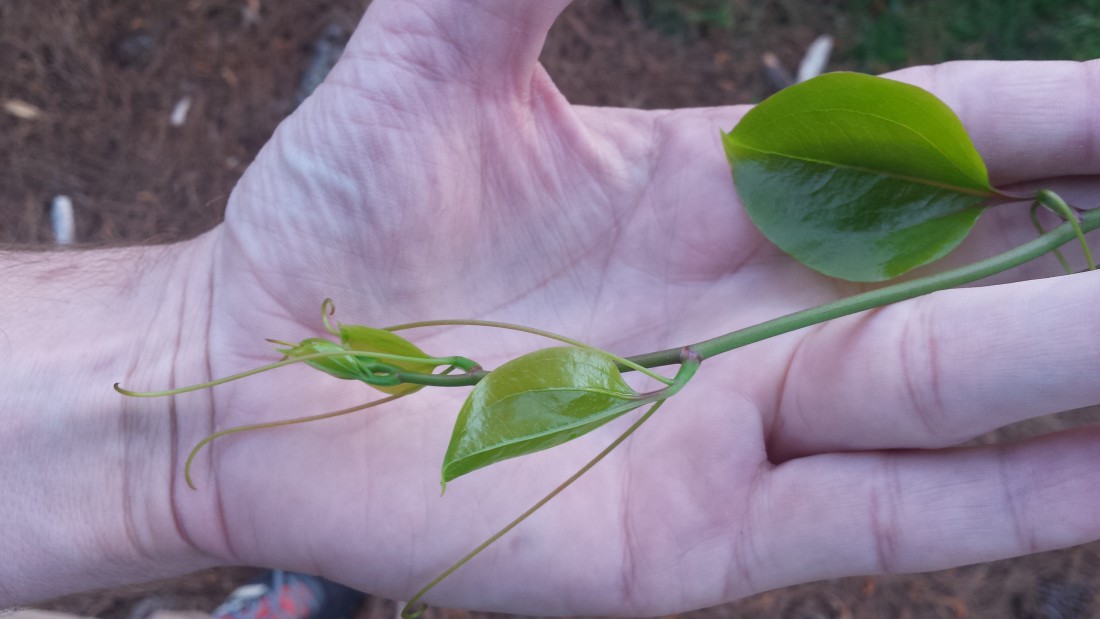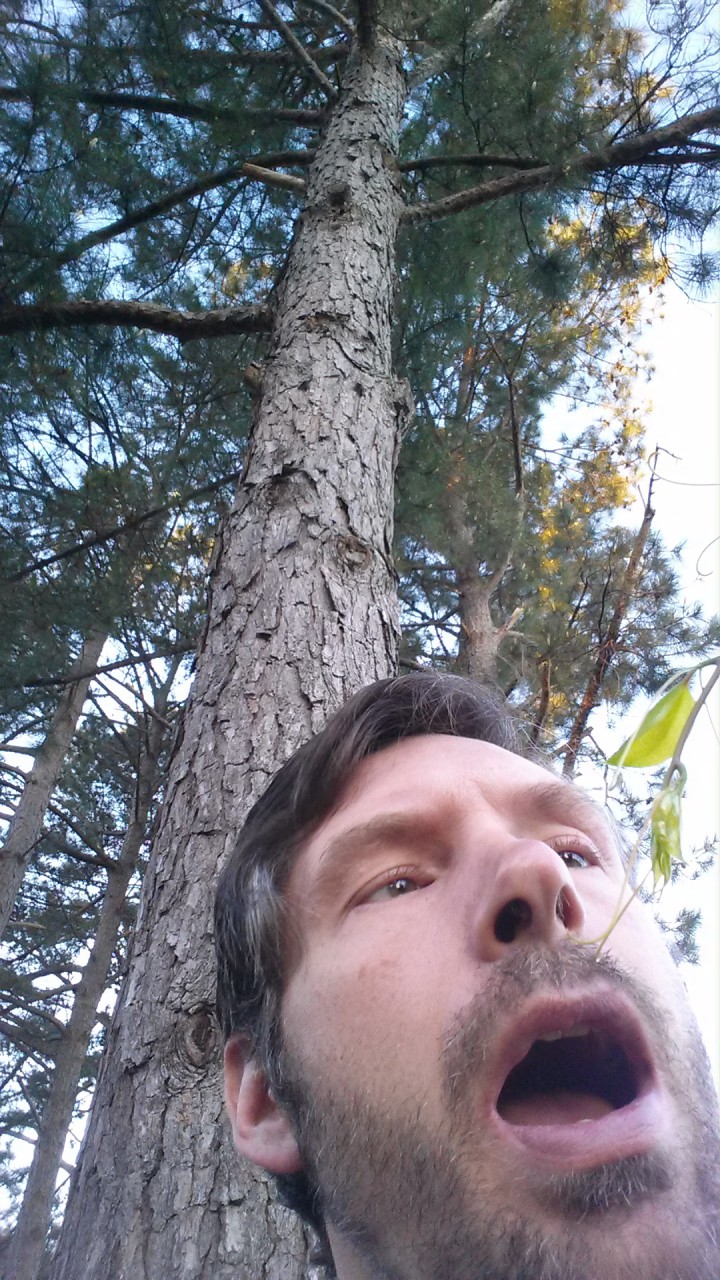We’re only a month into spring proper, but seasoned foragers have already been dining on the many wild edibles that have popped up so far. I’ve personally thus far enjoyed dandelion, chickweed, elm samaras, redbud blossoms, wisteria blooms (which some guides caution against), black locust flowers, garlic mustard, Japanese knotweed, wild lettuce and greenbrier shoots, among others.
Greenbrier shoots (Smilax) are worth noting because even though they start earlier, they’re still out and ready to be snapped off and enjoyed raw or cooked.
While I could have highlighted a less often found native plant, I usually let those be and opt for something more plentiful like Smilax rotundifolia. Some actually consider this an invasive to gardens and hedges because as a vigorously growing vine, it can pierce even the thickest patch of intentionally planted ornamentals. But it’s really not something I’ve ever seen get out of hand and completely take over an area, like kudzu (another wild edible).
Some foragers have described the Smilax shoot as looking like a walking stick. And, in fact, its most readily enjoyed portion — the end of the vine, which snaps off with only a light pinch and tug — is reminiscent of some kind of creepy-crawly insect with a pencil-long thorax and abdomen and two long, wiry crossing terminal tendrils. I’ve freaked myself out by just closing my eyes and gently brushing one against the side of my neck.
A nice thing about foraging for Smilax is that it’s fairly easy to identify. While there are vines around Asheville that are poisonous, like American bittersweet (Celastrus scandens), none of them are quite identical to Smilax. I will say, though, that how closely a wild edible does or does not resemble a poison plant is often directly proportional to the forager’s experience.
When I first started foraging, I was worried about mistaking green-headed coneflower for water hemlock, but I now see absolutely no similarity between the two. Be careful, too, that you’re mindful when plucking Smilax shoots because it’s easy to get excited and yank other plants — which may be toxic — in with your catch. I found myself doing this the other day when, in snatching up handfuls of chickweed, I noticed poisonous vetch laced throughout.
Eaten around the world, Smilax is a popular wild food. I enjoy eating the green shoots raw, but I like them even more cooked in a pan lightly coated with olive oil or cut into lengths of 6-8 inches and steamed along with other veggies. Some have likened these shoots to asparagus, but, to me, the flavor is nothing like that. In fact, wild foods in general taste so different from anything at the grocery store, there’s usually no good comparison.
Many plants, like rhubarb, have some parts that are edible and others that are toxic. Other parts of the Smilax vine are said to be usable as well, such as the berries (when old) or roots for teas or root beers. I haven’t tried either, as when I have made root beer, I’ve used sassafras (Sassafras, albidum) (as well as enjoyed its young leaves in salads) and black birch (Betula, lenta).
I attended a wild edible plant workshop the other day in which the instructor talked about how dangerous edible mushrooms can be to pick because of the difficulty in distinguishing them from poisonous look-alikes. He went on to say that plants, with a couple of exceptions such as poison hemlock, are pretty safe. The late respected plant teacher Frank Cook once instructed me, “Reach out and grab a handful of plants, and what you’ll get will be mostly edible ones.”
While it’s true that poisonous plants aren’t exactly encircling foragers with torches and hangman’s nooses, there are definitely more than a couple of dangerous varieties to beware of. So, being absolutely certain you have found your wild edible is very important. I still take the time to key out anything I’m uncertain of (using several plants guides for cross-reference) and try new wild edibles in the presence of another forager who has already learned it.
Another thing to remember is that even if the identification of the target wild edible is right, there’s still a chance that an allergy to it could exist or that it could have been sprayed with a pesticide or herbicide. Therefore, knowing where to harvest wild edibles is important as well. The best bet is large tracts of private land where no poison has been used and no toxic dump sites exist. This can be more difficult that it seems. Consider the little-known Superfund site lurking near the seemingly pristine forests of Warren Wilson College. How many have foraged near its red zone without knowing?
Foraging is one of my favorite activities, although it took many years to feel comfortable working up to the amount of wild foods I eat today. Though plant books are essential, the best way to start is with the help of a guide — someone who can show you exactly what to do. Then, practice, practice, practice. Asheville regularly features foraging workshops, wild foods guides and herbal schools. Some of my favorite Asheville-area foraging teachers include Marc Williams, Robin Allison, and Doug Elliott, etc.
Disclaimer: There is inherent risk in foraging. Proceed only in the presence of an expert forager. Experience varies from person to person.





Very interesting. Thanks
Glad you enjoyed it, Samantha!
Love this article! Although I’ve foraged for several years now, this is the first year I’ve actually sought out and eaten saw briars. (In fact, I just forged some this morning on my walk.) A couple of my Italian friends enjoyed my last batch with me – the rest of my friends (and husband) just think I’m strange…hey, they’re just missing out!